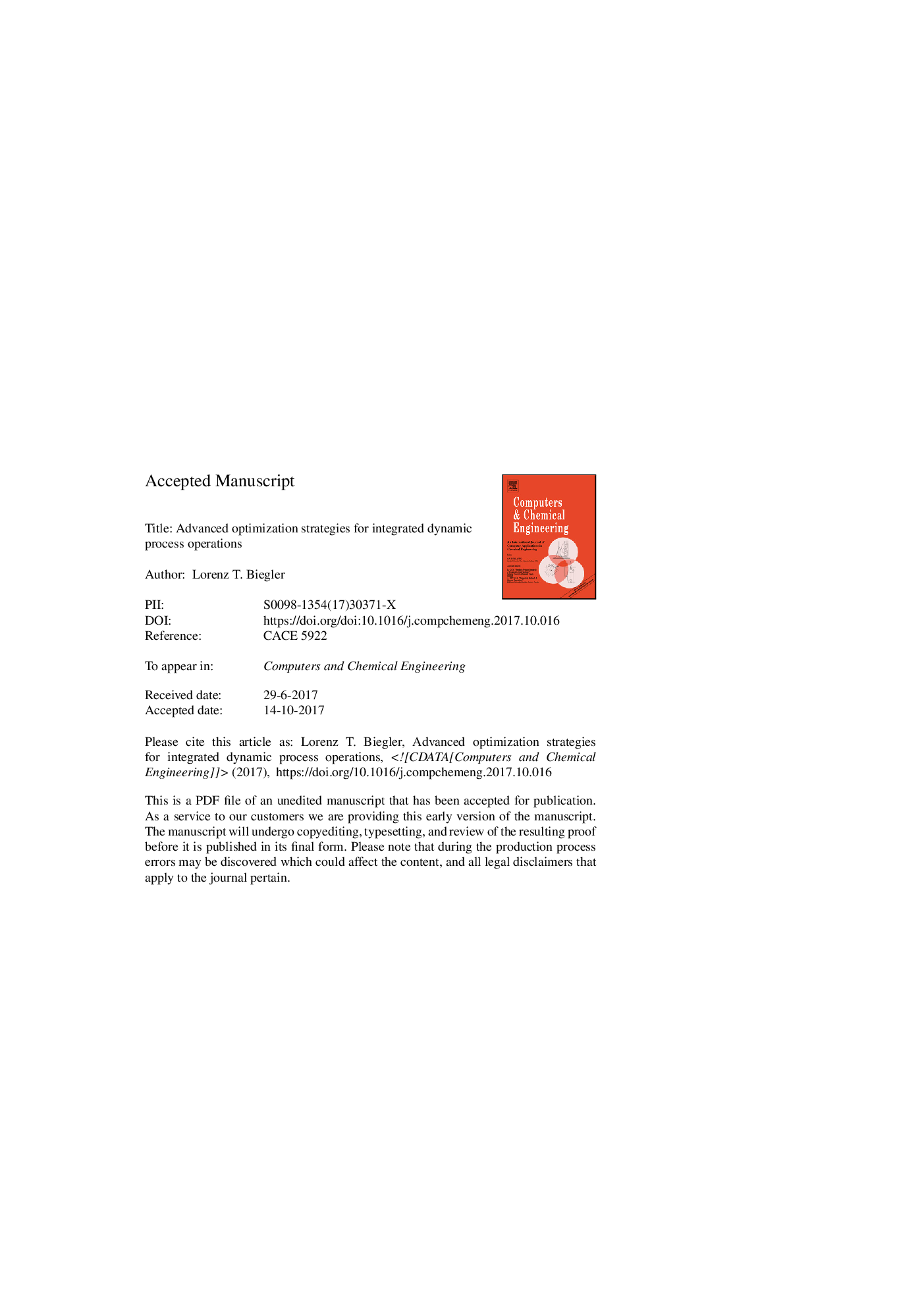| Article ID | Journal | Published Year | Pages | File Type |
|---|---|---|---|---|
| 6594773 | Computers & Chemical Engineering | 2018 | 16 Pages |
Abstract
Modern approaches for dynamic optimization trace their inception to Pontryagin's Maximum Principle 60 years ago. Since then the application of large-scale nonlinear programming strategies has been extended to deal with challenging real-world process optimization problems. This study discusses and demonstrates the effectiveness of dynamic optimization on three case studies on real-world chemical processes. In the first case, we consider the optimal design of runaway reactors, where simulation models may lead to unbounded profiles for many choices of design and operating conditions. As a result, optimization based on repeated simulations typically fails, and a simultaneous, equation-based approach must be applied. Second, we consider optimal operating policies for grade transitions in polymer processes. Modeled as an optimal control problem, we demonstrate how incorporation of product specification bands leads to multi-stage formulations that greatly improve process performance and significantly reduce off-grade product. Third, we consider an optimization strategy for the integration of scheduling and dynamic process operation for general continuous/batch processes. The method introduces a discrete time formulation for simultaneous optimization of scheduling and operating decisions. Finally, we provide a concise summary of directions and challenges for future extension of these optimization formulations and solution strategies.
Related Topics
Physical Sciences and Engineering
Chemical Engineering
Chemical Engineering (General)
Authors
Lorenz T. Biegler,
